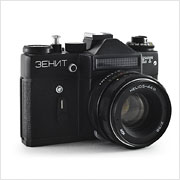Rollei Rolleimatic
The Rollei Rolleimatic was a compact 35mm viewfinder camera introduced by Rollei in 1980. It has the distinction of being the last Rollei model created by legendary designer Heinz Waaske (whose other works include the extraordinary Rollei 35 and the diminutive Edixa 16) and also, unfortunately, the very last camera that Rollei debuted before the ailing company finally declared bankruptcy. Because of this unfortunate timing, the Rolleimatic did not undergo the same amount of testing that benefitted its forebears and, as a result, is not quite as user-friendly or intuitive as it could have been.














